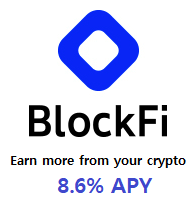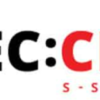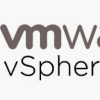BGP Communities
The use of BGP communities are helpful in manipulating traffic flows. They are commonly used to determine and avoid congestion or network failure. CRNC utilizes BGP communities over every BGP-enabled link. For more information please contact us at [email protected]
| Transit | |
| All Transitors |
29838:1000 |
| Voxel |
29838:1001 |
| Deprecated |
29838:1002 |
| nLayer |
29838:1003 |
| Deprecated |
29838:1004 |
| Deprecated/IHN |
29838:1005 |
| Mzima |
29838:1006 |
| Public Peering | |
| All Public Peers |
29838:2000 |
| NYIIX |
29838:2001 |
| NYCX |
29838:2002 |
| Private Peering | |
| All Private Peers |
29838:3000 |
| Latency Networks |
29838:3001 |
| Customer | |
| Customer |
29838:4000 |
| NYC1 (Telehouse – 25 Broadway, New York, NY) |
29838:4001 |
| NJ1 (Equinix – 275 Hartz Way, Secaucus, NJ) |
29838:4002 |
| NYC2 (CRNC – 325 Hudson St, New York, NY) |
29838:4003 |
| CRNC Originated | |
| CRNC Originated |
29838:5000 |
| NYC1 (Telehouse – 25 Broadway, New York, NY) |
29838:5001 |
| NJ1 (Equinix – 275 Hartz Way, Secaucus, NJ) |
29838:5002 |
| NYC2 (CRNC – 325 Hudson St, New York, NY) |
29838:5003 |
All routes within the CRNC network carry a local preference
| 35 | Depreferred Transit |
| 40 | Standard Transit |
| 45 | Preferred Transit |
| 75 | Depreferred Public Peering |
| 80 | Standard Public Peering |
| 85 | Preferred Public Peering |
| 85 | Depreferred Private Peering |
| 90 | Standard Private Peering |
| 95 | Preferred Private Peering |
| 115 | Depreferred Customer or CRNC Originated |
| 120 | Standard Customer or CRNC Originated |
| 125 | Preferred Customer or CRNC Originated |
Applying BGP Community string with sample configuration
1. Get the latest BGP community string from your ISP/upstream provider or check www.ShowipBGP.com.
2. Pick the best BGP community string for your traffic shaping plan (mainly incoming traffic). Most of ISPs are providing community string with local preference and AS prepending option. Cannot tell which one is better than the other. It will depend on your global traffic shaping plan.
3. Follow the below commands ( Cisco only )
The below Sample configuration will tag the 10.0.0.0/24 route with 29838:120 or 29838:3 and will not tag any other routes.
router#config t
router(config)#ip bgp-community new-format
router(config)#access-list 10 permit 10.0.0.0 0.0.0.255
router(config)#access-list 10 deny any
router(config)#route-map to-AS29838 permit 10
router(config-route-map)#match ip address 10
router(config-route-map)#set community 29838:120 <—— using Local Preference
or
router(config-route-map)#set community 29838:3 <——— using AS prepending
router(config-route-map)#route-map to-AS29838 permit 20
router(config-route-map)#exit
router(config)#router bgp [xxxx] <—————————- xxxx = customer’s ASN
router(config-router)#neighbor x.x.x.x send-community
router(config-router)#neighbor x.x.x.x route-map to-AS29838 out
router(config-router)#exit
router(config)#exit
router#copy running-config startup-config
4. And then, go to www.RouteServer.org and pick one of route server on the map to see your announcement. If you are using AS prepending option, you will see your AS prepends on route servers. Sometime you might not see your route with particular ISP path.
In most of case it might not be any routing problem, just the route path was dropped at somewhere by BGP best path selection scheme. Try Oregon route server, if you can see your route. The Oregon route server is providing many possible and available paths between BGP speakers and neighbors.
If you don’t see your route on there? check other route servers and also check your
BGP configuration. You might need to contact your upstream provider to check what they are learning BGP route from you.



 The www.ipBalance.com runs by a volunteer group with IT professionals and experts at least over 25 years of experience developing and troubleshooting IT in general. ipBalance.com is a free online resource that offers IT tutorials, tools, product reviews, and other resources to help you and your need.
The www.ipBalance.com runs by a volunteer group with IT professionals and experts at least over 25 years of experience developing and troubleshooting IT in general. ipBalance.com is a free online resource that offers IT tutorials, tools, product reviews, and other resources to help you and your need.

![[Splunk] – Basic search fields and commands logo_splunk.png](https://ipbalance.com/wp-content/uploads/2009/06/logo_splunk-100x80.png)
